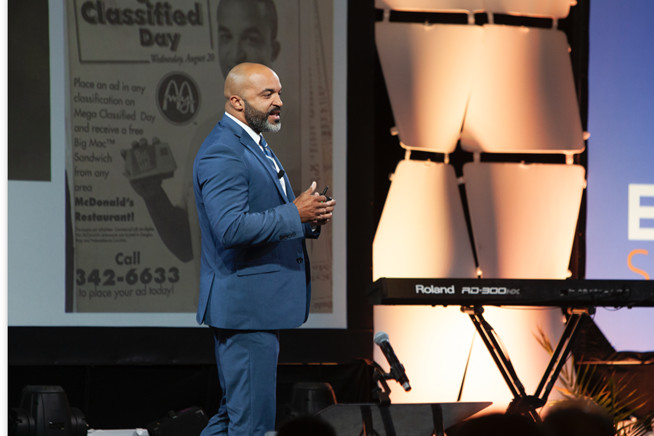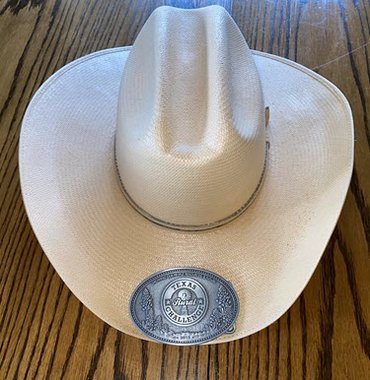The Federal Reserve System recently released a book titled “External LinkInvesting in Rural Prosperity.” In this book, 79 authors share innovative strategies for rural community development. I am excited about this book because I am passionate about rural development. I would like to share how I got engaged in rural development and why I think rural communities are so important.
I joined the Federal Reserve Bank of Kansas City in 2011, the day after Martin Luther King Jr. Day. Before joining the Bank, I had spent most of my life living and working in North Omaha, Nebraska. Until recent demographic shifts, North Omaha had been the only majority-minority community in the state. Nearly 50% of the state’s African American population lived in North Omaha. The city had the distinction of having the highest poverty rate in the entire nation for African American children, according to a 2008 Pew Research Center report.
My first assignment at the Kansas City Fed was to develop our small business work for the community development team. I knew entrepreneurship was essential to developing distressed communities because of my experience with banking and community advocacy in North Omaha. So, without recognizing it, I jumped into what is now called entrepreneurship ecosystem building.

He still has that belt buckle and cowboy hat
Shortly after that, we released “External LinkGrow Your Own,” our first guide to entrepreneurship-led economic development. This short guide shared ways communities could build their small business ecosystem for economic development purposes. Almost immediately, I began to receive speaking requests. Nearly every request was from a rural community or for rural conferences. I put together a PowerPoint presentation and hit the road.
For the first five years of my career at the Kansas City Fed, up to 75% of my speeches and presentations were about rural development. The appetite for new strategies for development in these communities was high. This appetite was often driven by significant population loss and economic growth challenges.

When you give the keynote for the Texas Rural Challenge in Waco, Texas, they show their appreciation.
I remember a presentation at the South Central Economic Development District in Nebraska. I shared data showing that the further away from the interstate a county was in their region, the greater its population loss. For example, the county farthest from the interstate lost more than 10% of its population over a decade. Losses like these make communities nearly unsustainable over time. This was and is a challenge for many of our rural places.
I drove for hours to speak in rural communities, many times ones with fewer than 1,000 individuals. Some years I did more than 30 presentations, which allowed me to visit great places and meet wonderful people. In Hebron, Nebraska, for example, they projected my presentation on their theater's new digital movie screen, which made me feel like Denzel Washington, and then they showed me the largest porch swing in America. I still have the big belt buckle and cowboy hat I received for my keynote speech at the Texas Rural Challenge in Waco, Texas. I did another cool event in South Dakota, where they broadcast my presentation across the Extension video network.
I enjoyed every minute of it.
Culture shock gives way to appreciation of rural areas
In many of these rural communities, I was the only African American at the event and sometimes nearly the only one in the entire county. Early on, this was a culture shock. I was an urban individual from a predominantly low-income African American community in Omaha, traveling throughout the rural Midwest. I was used to the dynamics of urban politics and being close to significant philanthropic and corporate resources, to population diversity and the benefits and challenges it brings. The culture shock quickly wore off, however, and I developed a passion for rural community development and an appreciation for the people and places we define as "rural." This was especially true of small rural towns. There is nothing cooler than a well-organized main street.
In the early days of working in rural areas, I realized a few things. The first was that I, like many urbanites, was biased against things “rural.” Because there weren’t as many amenities in rural towns, many of us from larger cities felt these communities were somehow lesser. I quickly found, though, that the increased sense of community, place and commitment often seemed to offset the perceived loss of 16 restaurants within a mile radius, like I have in Omaha. I discovered that if we approach rural towns from a perspective of strengths and assets, the value of rural towns can easily be seen.
The second thing I realized was that many of the challenges rural communities face are the same as in urban core communities, like mine. I vividly remember sitting with a group at a Rural Futures meeting in Lincoln, Nebraska, when a younger participant said that many parents from declining rural towns tell their kids to leave and not come back. During my travels, many others shared this same sentiment with me. Not only did this sadden me, but it echoed what I heard in my own community. Many from my neighborhood were also told to leave, not just North Omaha, but the entire state of Nebraska. This, coupled with the shared urban/rural challenges such as high-quality economic development and education, made me realize that rural communities need advocates also.
This brings me to my third realization. People matter, and therefore, the places where people live, work and play matter. This includes rural communities. I have heard some economists say certain rural towns should close up shop. They say these towns have no long-run prospects, and the cost to states of helping sustain them outweighs the benefits. I reject this. These communities are not just economic entities that should only exist because they generate net economic benefit to the state. They are places of potential and opportunity that require better economic development and support. This is why I have been such a strong advocate for entrepreneurship-led economic development as an economic development strategy in many rural communities. It helps unleash rural talent. It is aspirational. And it provides an opportunity for long-run sustainable economic growth.
This year I am returning to my roots at the Kansas City Fed, focusing on rural economic and community development. Not only will I help promote “External LinkInvesting in Rural Prosperity,” but I will be holding webinars and, most importantly, getting back out in the seven states of our Tenth District doing rural listening and sharing sessions. At the Kansas City Fed, we believe rural places matter. I can’t wait to hit the road again!
